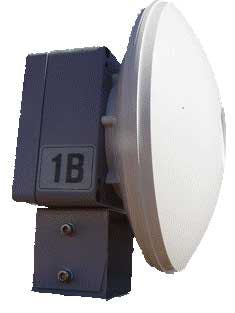Wireless technology is everywhere, used in applications from the simplest sensors to the most sophisticated communications systems. The frequencies for these different applications are not random, of course, but governed by different standards organizations to minimize overlap and interference as much as possible. Many wireless standards have been created over the years to establish guidelines for the different uses and applications of wireless technology. In spite of the large following for such applications as personal communications systems (PCS)—such as cellular telephones and wireless local area networks (WLANs)—wireless technologies and their standards are still growing at a healthy rate, expanding into application areas that include automotive, industrial, and medical electronic systems.
Communications among cellular network users may still represent the largest single application for wireless technology, but wireless links between machines, or machine-to-machine (M2M) communications, may be gaining ground. The IEEE’s group of 1609 standards are being developed for automotive wireless applications at 5.9 GHz. The standards define the architecture, communications model, management structure, security mechanisms, and physical access for applications related to wireless access in vehicular environments (WAVE).
These communications networks include on-board units (OBUs) and roadside units (RSUs). Different sections of the IEEE 1609 standard refer to network management (1609.1), security protocols (1609.2), network layer protocol (1609.3), and extensions to IEEE 802.11 (such as IEEE 802.11p for automotive wireless networking) for physical channel access (1609.4).
The IEEE 1609 channel plan supports 10-MHz channels from 5.850 to 5.925 GHz for short- to medium-range communications (e.g., for roadside-to-vehicle and vehicle-to-vehicle communications). Wireless technology in automobiles enables a number of different applications, such as navigation, remote diagnostics, in-vehicle Internet access, emergency communications, and even stolen vehicle tracking and recovery.
In Europe, the European Union (EU) is promoting an application known as eCall in their attempts to create a location-enhanced emergency response network based on the standard European emergency telephone number: 112. The eCall system blends the features of an in-vehicle system (IVS) with wireless connectivity and Global Positioning System (GPS) location capability with the European Public safety Answering Points (PSAPs) infrastructure to help minimize the response time following a traffic accident. If an IVS device detects an accident it calls a PSAP station, transmits vehicle data and location information, and establishes a voice communications connection. The EU is hoping that eCall will cut the number of highway fatalities in EU countries in half by 2014 (Fig. 1). In the United States, similar solutions such as OnStar should help improve traffic safety.
1. Earlier this year, three cars equipped with eCall systems crossed a finish line in Brussels as part of a trial of the eCall system. The event, attended by major players involved in the development of the eCall system, demonstrated that it works successfully throughout Europe. [Photo courtesy of NXP Semiconductors.]
Growth of wireless technologies will see more electronic devices fueled by multiple wireless standards. Near-field communications (NFC) capability, for example, is being added to many newer cellular telephones. It enables NFC-equipped devices to communicate at low data rates (to 424 kb/s) by touch or over a short distance (less than 0.2 m) using point-to-point communications at 13.56 MHz.
NFC, which is based on radio-frequency-identification (RFID) communications standards including ISO/IEC 1444, is promoted by the NFC Forum, a non-profit industry association with more than 170 member companies worldwide. The NFC Forum recently approved a new analog technical specification, which is available for free download from its website. The specification details a common radio interface for NFC integrated circuits (ICs).
Along with applications in automotive systems and personal communications, including in WLAN applications, wireless technologies will continue to expand in medical and industrial applications. IEEE 802.11b and IEEE 802.11g WLAN technologies have long been popular for wireless medical applications, as has traditional Bluetooth technology from 2.4 to 2.5 GHz for medical devices such as wearable electrocardiograph (ECG) monitors.
In addition, a newer form of Bluetooth, Version 4.0 for low-power applications, is emerging as a good fit for medical applications. It employs lower duty cycles than standard Bluetooth for lower overall power consumption, using duty cycles on the order of 0.25%. It shares the 128-b encryption and frequency-hopping characteristics of standard Bluetooth, and offers a communications range of about 160 ft (50 m), but draws only microamperes of current and can power sensors for extremely long time periods on battery power. Low-power Bluetooth also trades off data-rate performance due to its lower power consumption, with capability to about 200 kb/s compared to 1 to 3 Mb/s for standard Bluetooth.
When high-speed data is a requirement, the IEEE 802.11ac version of WLAN brings a number of improvements to a successful wireless technology to boost performance. In contrast to older WLAN versions of IEEE 802.11, such as IEEE 802.11b in the 2.4-GHz band, IEEE 802.11ac is a gigabit WLAN version designed for use in the 5-GHz ISM band. It makes use of 160-MHz channel bandwidths; high-level modulation [to 256-state quadrature amplitude modulation (256QAM)]; and advanced multiple-input, multiple-output (MIMO) antenna schemes, with as many as 8 x 8 MIMO spatial streams to achieve single data streams to 500 Mb/s and multiuser speeds of better than 1 Gb/s.
Perhaps the fastest-growing use of wireless technology will occur in industrial environments, as part of process monitoring and factory automation. Wireless technologies such as the ISA100.11a standard developed by the International Society of Automation (ISA) and the WirelessHART standard—based on the highway addressable remote transducer protocol (HART) architecture—both use the 2.4-GHz ISM band and 802.15.4 WLAN standard radio technology for such applications as sensor monitoring.
Both standards are designed to coexist with many other wireless standards in the industrial workplace, including cellular telephones and WLANs. ISA-100.11a was developed to provide reliable and secure wireless operation for noncritical monitoring and control applications where latencies on the order of 100 ms can be tolerated. WirelessHART, which is based on the Release 7.0 of the HART protocol, features integrated security and targets rotating equipment, such as kiln dryers, as well as environmental health and safety applications like condition monitoring.
Another low-power wireless standard, WAVE2M, is a two-way radio technology developed for such applications as automated meter reading and building automation. Developed by the WAVE2M Community, an international nonprofit standard development organization, this low-power, low-data-rate technology is well suited for industrial and medical applications.
Based on license-free ISM bandsincluding 868 MHz in Europe, 915 MHz in the United States, and 433 MHz in Asia, WAVE2Mtypically operates at low data rates of 38.4 kb/s or lessusing automatic frequency control, programmable output power, automatic sensitivity control, and adaptive frequency hopping. WAVE2M networks are not limited in size, but can be as large as several hundred devices. With WAVE2M, wireless monitoring can be performed from fixed access points and/or from portable or mobile devices.
Of course, the expansion of wireless technology is not limited to these “lower frequency” bands. Unlicensed bands exist into the millimeter-wave frequencies; the bandwidth available at 60 GHz, for example, has attracted a number of hardware suppliers to pursue millimeter-wave solutions for high-speed Gigabit Ethernet systems and point-to-point links (Fig. 2). A total of 7 GHz (from 57 to 64 GHz) has been allocated by the United States’ Federal Communications Commission (FCC) for unlicensed, unchannelized point-to-point use at high data rates, with frequencies from 59 to 66 GHz available for unlicensed use in Japan.
2. Unlicensed 60-GHz radios such as this Airebeam 60 systemoperate across available bands of 57 to 64 GHz in the United States and 59 to 66 GHz in Japan with capability of gigabit Ethernet speeds. [Photo courtesy of Airlinx Communications.]
The narrow beamwidths of signals at those frequencies allow for several antennas to be collocated without interference and with fairly good security. As the expansion of wireless applications has shown, the need for wireless solutions knows no limit on frequency or data rates.
About the Author
Jack Browne
Technical Contributor
Jack Browne, Technical Contributor, has worked in technical publishing for over 30 years. He managed the content and production of three technical journals while at the American Institute of Physics, including Medical Physics and the Journal of Vacuum Science & Technology. He has been a Publisher and Editor for Penton Media, started the firm’s Wireless Symposium & Exhibition trade show in 1993, and currently serves as Technical Contributor for that company's Microwaves & RF magazine. Browne, who holds a BS in Mathematics from City College of New York and BA degrees in English and Philosophy from Fordham University, is a member of the IEEE.


